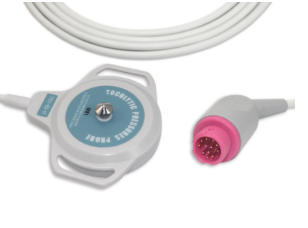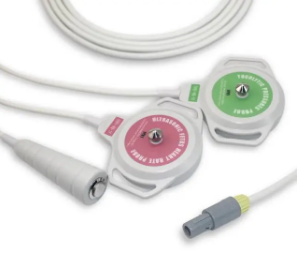The newborn blood oxygen probe is used to monitor the blood oxygen saturation level of the newborn, which can effectively guide the normal health status of the baby.
Most newborns are born with healthy hearts and enough oxygen in their blood. However, about 1 in 100 newborns have congenital heart disease (CHD), and 25% of them will have severe congenital heart disease (CCHD).
Newborns with severe coronary heart disease have low oxygen levels and often require surgery or other procedures in their first year of life. Sometimes urgent intervention is necessary in the first days or weeks of a newborn's life. Some examples of severe coronary heart disease include coarctation of the aorta, transposition of the great arteries, hypoplastic left heart syndrome, and tetralogy of Fallot.
Some types of CCHD cause lower-than-normal levels of oxygen in the blood and can be detected with a newborn oximeter even before the newborn becomes ill, thus providing early detection and appropriate treatment, and possibly improve their prognosis.
The American Academy of Pediatrics (AAP) recommends pulse oximetry in all newborn screenings to detect CCHD. As of 2018, all U.S. states have implemented policies to screen newborns.
Fetal ultrasound of the heart cannot detect all types of heart defects
While many fetal heart problems can now be detected by fetal ultrasonography, and families can be referred earlier to a pediatric cardiologist for further care, there are still some cases of CHD that may be missed.
Signs and symptoms of CCHD, such as a bluish complexion or shortness of breath after birth, are seen in many newborns who are diagnosed and treated before being discharged from the hospital. However, some newborns with some type of CCHD who appear healthy and behave normally a few days ago suddenly become very ill at home.
How to filter?


A small soft sensor wraps around the newborn's right hand and one foot. The sensor is connected to the monitor for about 5 minutes and measures the oxygen level in the blood as well as the heart rate. Newborn blood oxygen probe monitoring is quick, easy and non-injurious. Pulse oximetry screening 24 hours after birth allows the newborn's heart and lungs to fully adapt to life outside the mother. After the screening is complete, a doctor or nurse will review the readings with the newborn's parents.
If there are problems with the screening test readings, other tests to evaluate for coronary heart disease or other causes of hypoxia may be necessary before the newborn is discharged from the hospital.
Tests may include a chest X-ray and blood work. A pediatric cardiologist will perform a thorough ultrasound examination of the newborn's heart, called an echocardiogram. The echo will assess all structures and functions of the neonatal heart in detail. If the echoes reveal any concerns, their medical team will discuss the next steps in detail with the parents.
Note: As with any screening test, sometimes the pulse oximetry screening test may not be accurate. False positives can sometimes occur, meaning that while a pulse oximetry screen shows a problem, an ultrasound can provide reassurance that a newborn's heart is normal. Their failure to pass the pulse oximetry screening test does not mean there is a heart defect. They may have other conditions with lower oxygen levels, such as infections or lung disease. Likewise, some healthy newborns have their heart and lungs in a state of adjustment after birth, so pulse oximetry readings may be low.
Post time: Nov-02-2022

